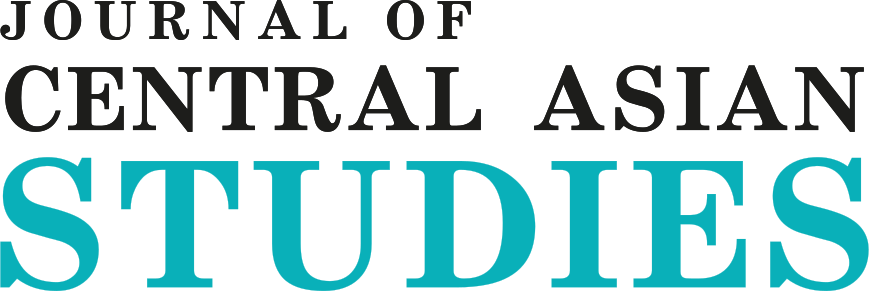Проблемы региональной идентичности в Центральной Азии: Европейский Опыт
DOI:
https://doi.org/10.52536/2788-5909.2022-2.03Ключевые слова:
Европейский союз , интеграция, региональная идентичность, Центральная АзияАннотация
В эпоху глобализации самые разнообразные процессы современной жизни рассматриваются через призму «кризиса идентичности» и «поиска идентичности». В последние годы обсуждение проблем идентичности стало основным направлением глобалистики. Некоторые критикуют этот процесс и считают, что глобализация требует глобальной, космополитической культуры с размытыми границами национальной идентичности. Другие считают, что глобальная взаимозависимость ведет к новому уровню регионального сотрудничества, предоставляя возможности и перспективы. В данной статье возник вопрос, будет ли Центральная Азия развивать региональную идентичность, впитывая в себя подходящее из европейского опыта или отложит эту идею.
Библиографические ссылки
Buluktayev Y. (2012). Problemy regional'noi identichnosti v Tsentral'noiAzii (Chast'1) [Regional Identity Issues in Central Asia (Part 1)]. Sauran - Sauran. 2012. URL: http://cc-sauran.kz/rubriki/politika/14-problemy-regionalnoy-identichnosti-vcentralnoy-azii-chast-1.html
Anderson, B. (2006) Imagined Communities: Reflections on the Origin and Spread of Nationalism, 3rd rev. ed., 235 p.
Kumar, D. (2010) Gellnerian Theory of Nation and Nationalism: A Critical Appraisal. Sociological Bulletin, 59(3), pp. 392–406.
Paasi, A. (2009). The resurgence of the ‘Region’ and ‘Regional Identity’: Theoretical perspectives and empirical observations on regional dynamics in Europe. Review of International Studies, 35(S1), 121-146. doi:10.1017/S0260210509008456
Laruelle, M. (2013) Foreign policy and affiliation with Central Asia. Pro et Contra - Pro et Contra. pp. 6-20.
Somuncuoglu, A. (2017) Identichnost' i napisanie istorii v integratsii Tsentral'noi Azii [Identity and History Writing in Central Asian Integration]. Tsentralnaya Aziya: Pyat Gosudarstv Ili Odin Region? - Central Asia: five states or one region? [Electronic resource] URL: https://www.caa-network.org/archives/author/anar-somuncuoglu (access date 25.08.2021).
Fact Sheets on the European Union: Language Policy. [Electronic resource]
URL:http://www.europarl.europa.eu/factsheets/en/sheet/142/language-policy (access date 25.12.2021).
Giovanni, R. (2015) United in Diversity Multilingualism in the European Union and India. 2014-2015. [Electronic resource] URL: https://tesi.luiss.it/14872/1/properzimaria-chiara-tesi-2015.pdf] (access date 25.12.2021).
Adamo, S. & Kjær, A. (2015) Linguistic Diversity and European Democracy. Cambridge University Press. pp.82–102.
European Commission Official. [Electronic resource] URL: http://ec.europa.eu/archives/commission_2004-2009/index_en.html (access date 25.12.2021).
Redinger, D. & Millar McColl, R. (2010) Language Planning and Policy on Linguistic Boundaries: the case of Luxembourgish. Marginal Dialects: Scotland, Ireland and Beyond. pp.90-106.
Languages for democracy and social cohesion. Diversity, equity and quality (2014) [Electronic resource] URL: https://rm.coe.int/languages-for-democracy-and-socialcohesion-diversity-equity-and-quali/168069e7bd (access date 25.12.2021).
Aubakirova, A. & Krengauz, I. (2020) Ekonomicheskie aspekty regional'noi identichnosti postsovetskoi Tsentral'noi Azii [Economic aspects of the regional identity of post-Soviet Central Asia]. Obzor ekonomiki Tsentral'noi Azii - Central Asian Economic Review. 3(132). pp. 8-19.
Загрузки
Опубликован
Выпуск
Раздел
Лицензия
Copyright (c) 2022 Аспандияр С., Нурдавлетова С.

Это произведение доступно по лицензии Creative Commons «Attribution» («Атрибуция») 4.0 Всемирная.










 Open content is licensed under the CC-BY
Open content is licensed under the CC-BY 